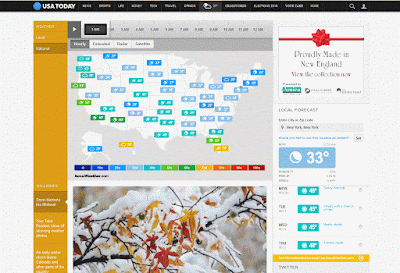If we want to measure temperature we can use centigrade or Fahrenheit’s scale.
degree(s) Celsius (°C)
degree(s) Fahrenheit (°F)
Scientists worldwide use the kelvin and degree Celsius.
Degrees Fahrenheit are used in the U.S. to measure temperatures in most non-scientific contexts.
Several technical standards are expressed in Fahrenheit temperatures and American medical practitioners often use degrees Fahrenheit for body temperature.
So he showed me a thermometer. But I saw 2 sets of numbers!
Tom explained that a thermometer measures in degrees (°) of either Celsius or Fahrenheit.
"Why two scales?", I asked.
Tom said that some people like one scale and some like the other, and that I should learn both!
The relationship between the different temperature scales is linear but the scales have different zero points.
We have got special formulas; the conversion formula is easily shown to be:
 or inversely as
or inversely as 
Or if we have Fahrenheit degrees we subtract 32 and increase the number fife ninths.
For example: (80°F - 32)* 5/9=26.7°C
Pure water is defined to freeze at 32 °F = 0 °C and boil at 212 °F = 100 °C at 1 atm.
Now, try to forecast the weather conditions in the USA using a picture below:
degree(s) Celsius (°C)
degree(s) Fahrenheit (°F)
Scientists worldwide use the kelvin and degree Celsius.
Degrees Fahrenheit are used in the U.S. to measure temperatures in most non-scientific contexts.
Several technical standards are expressed in Fahrenheit temperatures and American medical practitioners often use degrees Fahrenheit for body temperature.
Temperature
I was feeling a bit hot, so I asked Tom how to measure temperature.So he showed me a thermometer. But I saw 2 sets of numbers!
Tom explained that a thermometer measures in degrees (°) of either Celsius or Fahrenheit.
"Why two scales?", I asked.
Tom said that some people like one scale and some like the other, and that I should learn both!
The relationship between the different temperature scales is linear but the scales have different zero points.
We have got special formulas; the conversion formula is easily shown to be:
 or inversely as
or inversely as 
Or if we have Fahrenheit degrees we subtract 32 and increase the number fife ninths.
For example: (80°F - 32)* 5/9=26.7°C
Pure water is defined to freeze at 32 °F = 0 °C and boil at 212 °F = 100 °C at 1 atm.
Now, try to forecast the weather conditions in the USA using a picture below:





Комментариев нет:
Отправить комментарий